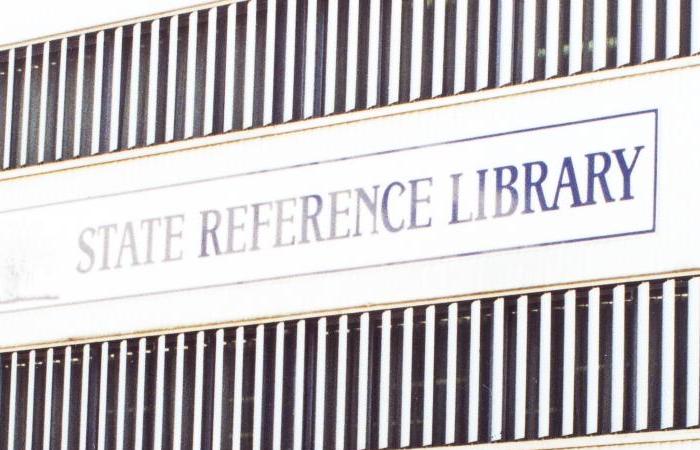History of the Northern Territory Library
The Northern Territory Library has met the needs of the community for more than 30 years.
The institution we now know as the Northern Territory Library opened in 1980 as the State Reference Library under inaugural head Ron Davis. It was one way that life in the Territory changed after the move to self-government and the improved access to resources that went with that.
The collection started out at just 15,000 volumes and was housed on one floor of a government building on Cavenagh Street. The new library was a popular addition to the Territory’s cultural landscape and grew quickly. Within its first couple of years the library had installed two computer terminals for public use – but the card catalogue was never far away.
By 1986 the library had extended its premises over all three floors of the Cavenagh Street building. The first Eric Johnston lecture was delivered in November 1986 by the colourful Commodore Johnston himself, and began a long tradition of annual lectures delving into all aspects of life in this unique place.

The library’s name was changed in 1991 to the State Library of the Northern Territory, even though the NT was not a state, and still isn’t. The new name, however, accurately positioned the institution among Australia’s other state libraries, as its role paralleled their special functions in collecting, preserving and presenting priceless cultural and historical treasures.
By 1993 the job of the library was expanded to include recording community content, which allowed Indigenous and other communities to donate and preserve their own material. At that point the collections in general had grown considerably – the images database alone now contained around 50,000 photographs. A relocation two years later to the newly-built Parliament House saw the library merge with the Parliamentary Library, and the new entity was again renamed in 1997, this time with the title it holds today.
The era of free internet access – something we now associate with all public libraries – began in 2000, and since then the library has continued to meet the challenges that rapid changes in information technologies have brought.
